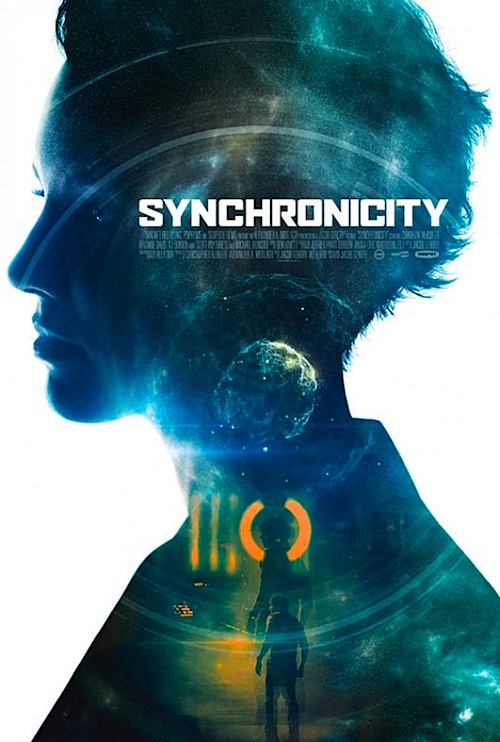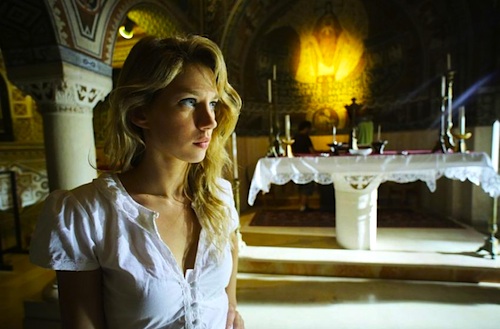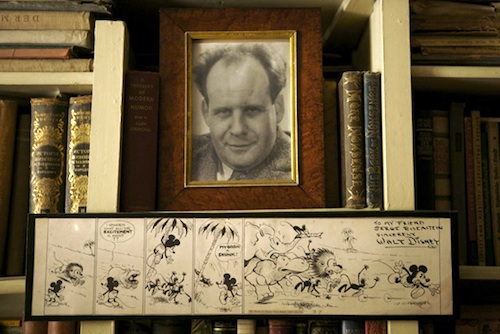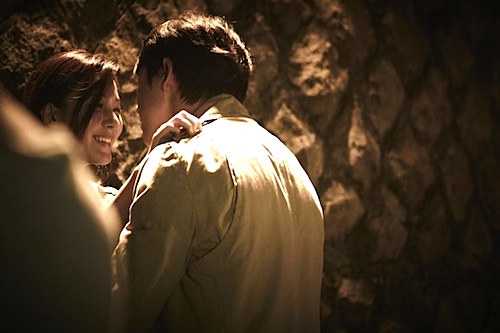By Joe Bendel. The Iran-Iraq War is raging and evil Djinn spirits might just be real, but at least Iran’s Basij morality police is there to protect society from uppity women who aren’t wearing their chadors. The repressive and misogynistic nature of the Islamist state compounds and in some ways facilitates the supernatural horrors that plague a young mother and her daughter in Iranian-born screenwriter-director Babak Anvari’s Under the Shadow, which screens during the 2016 Sundance Film Festival.
According to legend, Djinn are malevolent entities that travel on “the Winds.” Those would be the psychic residuals generated by humanity’s wrath, fear, and hatred—basically the dark side of the Force. With Tehran facing regular Iraqi bombings and missile attacks, the Winds are definitely swirling.
Shideh was studying to be a doctor like her husband Iraj, but she was expelled for political reasons. Of course, just being a woman did not help much either. While Iraj serves his annual medical duty at the front, their daughter Dorsa consoles herself with Kimia, the beloved doll he gave her. Unfortunately, when Kimia mysteriously disappears, Dorsa becomes very difficult to handle.
Simultaneously, Shideh starts having disturbingly realistic nightmares and even sees strange shadows out of the corner of her eye. According to the creepy orphaned kid staying with his aunt and uncle on the floor below, Djinn mark their victims forever by stealing their most prized possessions. Shideh does not believe in superstition, but eventually she has to face the uncanny facts.
Under the Shadow is the sort of horror film that really raises the bar and throws down the gauntlet for the genre. It is indeed massively creepy, so it more than fulfills its immediate requirements. However, Anvari also bakes in a considerable amount of social commentary, but he does so in a way that reinforces and amplifies the mounting dread rather than detracting from it. Between the nefarious Djinn, the suspicious Islamists Shideh must keep at bay, and the shells literally falling on her building, Anvari has no end of means to make us jumpy.
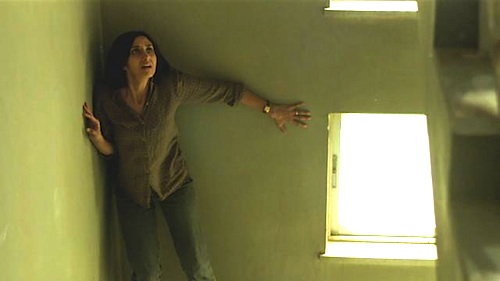
The Iranian-German Narges Rashidi might just give the best portrayal of a horror movie mom, maybe ever. Shideh is not just trying to save her daughter. She is brimming with pent-up anger and resentment for the injustice of her situation as well as the general narrowing of opportunities for women in Islamist Iran. Avin Manshadi also shows unusual range for a young thesp as Dorsa. Their difficult relationship brings to mind Jennifer Kent’s The Babadook, but it is considerably more complex and believable.
As if that were not enough, Anvari and production designer Nasser Zoubi’s team vividly recreate the look and feel of 1980s Iran, down to Shideh’s bootleg Jane Fonda workout tape and the forbidden top-loading VCR. Kit Fraser’s cinematography is eerie and evocative, perfectly matching Anvari’s instinctive sense of how much (and how little) the film should show to maintain its sense of dark mystery. Very highly recommended, Under the Shadow screens again this Thursday (1/28) in Park City, as part of this year’s Sundance Film Festival.
LFM GRADE: A+
Posted on January 27th, 2016 at 6:00am.

